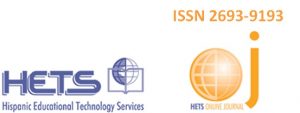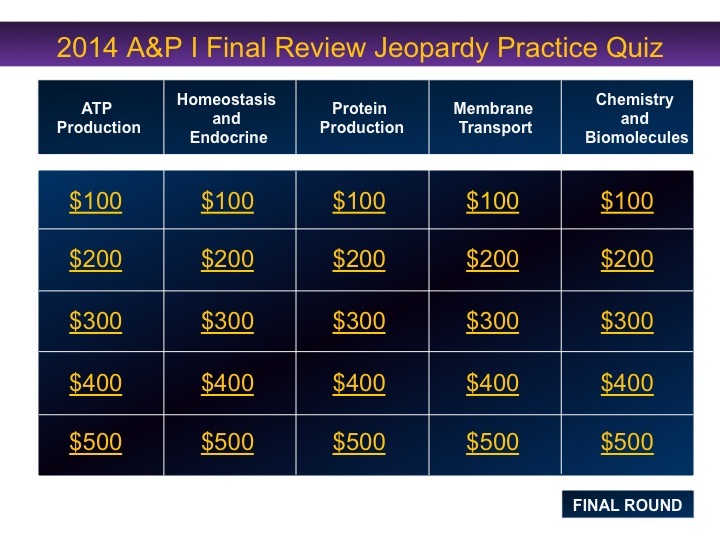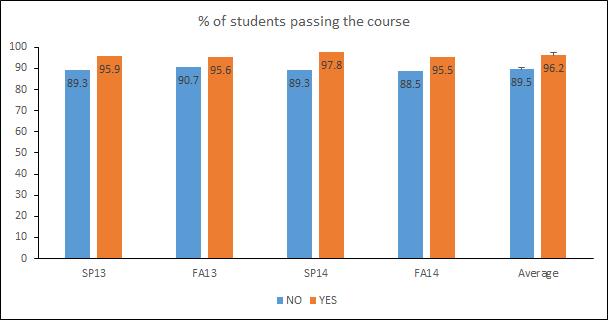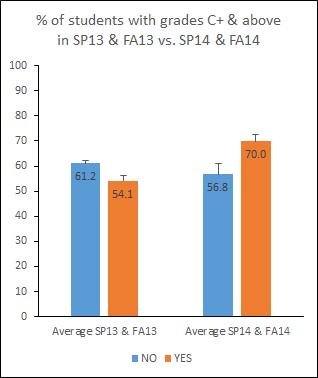Assessment of a Technology-Enhanced Review Workshop before Final Exams in an Undergraduate Human Anatomy and Physiology Course.
Seher Atamturktur,
Associate professor,Biological Sciences Department
Bronx Community College of CUNY
2155 University Avenue, Meister Hall 508, Bronx, New York 10453
Seher.atamturktur@bcc.cuny.edu
Office: 718 289 5516
Cell: 201 245 7489
Kyeng Lee
Associate professor
Biological Sciences Department
Bronx Community College of CUNY
2155 University Avenue, Meister Hall 415, Bronx, New York 10453
Kyeng.Lee@bcc.cuny.edu
Office: 718 289 5539
Cell: 917 648 1514
Rujin Tian
Associate professor
Biological Sciences Department
Bronx Community College of CUNY
2155 University Avenue, Meister Hall 412, Bronx, New York 10453
Rujin.Tian@bcc.cuny.edu
Office: 718 289 3414
Keywords: Hispanic-Serving Community College, Gateway Course, Anatomy and Physiology I, Final Exams, Review Sessions, Biomedical Animations, Jeopardy Style PowerPoint Quiz Game
Abstract
Gateway science courses are challenging for community college students, particularly for underrepresented Hispanic students who struggle with the course content as well as time management in their daily lives. In order to improve their academic success and understanding of Human Anatomy & Physiology, a series of two-weekend Anatomy and Physiology review workshops were offered prior to the cumulative final exams. Among others, teaching strategy included presentation of 3D animation video clips illuminating step-by-step biomedical processes, followed by fun Jeopardy-style Quiz competition. The competitions aimed at stimulating student interest and triggering their instant feedback that would reflect the level of their comprehension on topics of challenge. Our findings showed that the rate of passing, particularly grades of C+ and higher (required in all nursing courses), was consistently higher for workshop participants than for non-participants. We believe that the technology-enhanced workshops created an exciting, game-like learning environment that resulted in greater engagement and better academic performance among our students.
Introduction
Human Anatomy and Physiology (commonly offered in two parts as A&P I & II), is a required course for many health science programs such as nursing, radiological technology, and nuclear medicine. Challenges that students of A&P face, and therefore their instructors do as well, have been the subject of numerous studies (Michael, 2007; Feder, 2005; Michael et al., 2009; Sefton, 2005; Harris et al., 2004). One major reason would naturally be the complexity of many advanced concepts that students must assimilate (Morton et al., 2007; Silverthorn, 2002; Vander, 1998). Others could be attributed to ineffective study strategy (Husmann, 2015) and weak foundation in biological knowledge (McKee, 2002).
Bronx Community College (BCC) is a Hispanic Serving Institution where student enrollment consists approximately of 60% Hispanic and 30% African ethnic background. The college offers a variety of health science programs, and A&P I is one of the highly enrolled courses (~10% of total student population). However, it also has the highest failure rate among other gateway biology courses (less than 30% of students achieving the required standard with a grade of C+ or greater). For our students, time limitation from family and work responsibility is an added challenge in addition to those mentioned above.
While individual tutoring sessions would obviously provide the greatest help to students such as ours, group-based workshops have also been shown to provide effective support in many instances (Bloom, 1984; Drane et al., 2005; Houlson, 2007; Mattheis and Jensen, 2014). To maximize students’ success rates and conceptual understanding of A&P I, a series of two-weekend review workshops were offered before the final exams for two consecutive years. In the second year, biomedical animations and Jeopardy-style quiz competition (embedded in PowerPoint presentations) were incorporated as tools to coach students “how to think” rather than “how to memorize,” which also proved to be fun and motivational (Bender & Randall, 2005). Here we demonstrate that the review workshop and the integration of these technology-based tools improved student learning as assessed both by the percentage of students who passed the course and the percentage of students who acquired grades C+ and above.
Methods
To assess the effectiveness of the Human Anatomy and Physiology I (A&P I) final exam review workshop on students who participated versus students who did not, the final grades for A& P I of both groups were used as the primary indicator of workshop success. The mean GPA of these students was also obtained from official school transcripts and used as a reflection of their general academic abilities. This course was taught over a one-semester period. Four workshops over four consecutive semesters (excluding summers) have been conducted to date (SP13, FA13, SP14 and FA 14). A total of 184 A&P I students took part in the final review workshop (49, 45, 46, and 44 respectively). All participants took part at least in one weekend review session (either Saturday or Sunday session to fit into a variety of working/course schedules) which covered a total of nine topics consistently identified by students as well as instructors as difficult (Homeostasis, Chemistry and Biomolecules, ATP production, Protein Synthesis and Membrane Transport, Nervous, Skeletal, Muscular and Endocrine Systems). Two faculty members (randomly selected for sessions and topics) each semester volunteered at each workshop. Students enrolled in each session were randomly assigned to professors of the workshop. The enrollment was not revealed to their A&P I instructors before or after the grading
of their final exams was completed. Teaching methods included model demonstrations, small group discussions, in-class writing activities, and direct instruction using PowerPoint slides. These models and PowerPoint slides with diagrams, photos and texts explaining major structures and functions were identical to those used in the regular A&P I classes. However, a unique motivational strategy_ 3D animation and subsequent Jeopardy Quiz Competition_ embedded in these PowerPoint slides was introduced for the two most recent semesters (Sp2014 and Fa2014) to further foster students’ understanding. Jeopardy game is where the dollar amounts on the Jeopardy board link to different slides with the questions, which then link to slides with the answers. An example of a fun Jeopardy-style quiz question ($200) that was introduced after a 3D animation illuminating the process of glycolysis and cellular respiration for ATP production is that:
“Which process does NOT release energy from glucose?”
- glycolysis. b. fermentation. c. cellular respiration. d. photosynthesis
Specifically, the Jeopardy-style Quiz game consisted of five untimed and multiple-choice questions for each topic. Questions in each topic were progressively more difficult from top to bottom. Selecting the correct answer led to a slide featuring written praise and feedback regarding why the answer was correct. Students were able to continue selecting responses until the correct answer was selected (e.g. see Exhibit 1).
Participants
Participants were instructed to pre-register for one session of their choice with their name and section number at the bulletin board outside the department office. Each participant had comparable cumulative credits with varying biological background. A&P I is a required prerequisite course for all participants (majoring in Allied Health programs).
Data Sources
We obtained three main sources of data for analysis. First, final exam grades of A&P I were assessed. Both groups were given the same final exam that included 75 multiple choice questions. It was cumulative with 25 common questions (identical for all sections of A&P I) and 50 different questions selected by each instructor. Moreover, passing (D or above) and withdrawing rates were compared, along with cumulative GPA and credits. Finally, we calculated the rates of C+ and above among both groups, since these are the minimum passing grades for Nursing, Radiological Technology and Nuclear Medicine programs.
Analyses
Data were analyzed using descriptive and inferential statistics. Means, standard deviations, t-tests for workshop participants and non-participantsere used (p≤0.05) to determine significance when comparing final grades, GPA, credits, and rates of pass and withdrawal, as well as grades of C+ and above.
Results
Over the period of four consecutive semesters, the academic performances of 1,226 students who continued in the course were examined. Students who have received non-academic grades (“Incompletes” and all variation of “Withdrawals”) were not taken into consideration. Of the 1,226 students, 184 students have participated in the workshop, comprising approximately 15% of the continuing students. Table 1 lists course-based parameters that include the rate of passing, the rate of earning grades C+ and above, the rate of grades between D- and C, and the average course grade (on a scale of 4) for each semester under investigation. These values were compared between the populations of students who have participated in the workshop and of those who have not (which constitutes the majority).
For each semester, the rate of passing was consistently higher for workshop participants than non-participants. To assess the degree of consistency in the results through time, the average and the standard deviation about the average for the measured parameters were calculated (Fig. 1). For all four semesters, the average rate of students passing the course was 96.2% for workshop participants and 89.5% for non-participants, indicating a 6.7% improvement in workshop participants. Relatively low standard deviation about the average (1.1% for workshop participants and 0.9% for non-participants) supported that there was a significant degree of consistency over time with respect to the passing rates. In order to assess if the 6.7% improvement in the passing rate was statistically significant, the results were subjected to t-test analysis. The two-tail p-value (by two-sample unequal variance method) was p = 0.0001, a statistically significant value (i.e., it is less than 0.05).
Grades C+ and above are considered high-achieving in this course. In the first two semesters (spring and fall 2013), there was an apparent decrease in this group of grades for workshop participants (61.2%) as compared to non-participants (54.1%; Fig. 2). However, t-test analysis showed that this was merely a statistically insignificant fluctuation (p = 0.24). On the other hand, workshop participants showed a significantly higher rate of grades C+ and above over non-participants (70.0% vs. 56.8%) in the last two semesters (spring and fall 2014; p = 0.03). Changes in the teaching strategy with greater application of technology-based teaching tools can be attributed for this increase. Details of this will be explored in the discussion.
The rate of grades between D- to C showed comparably similar increases in spring and fall 2013 for workshop participants (28.9% to 38.8%, and 28.8% to 44.4%, respectively; Table 1). Therefore for these semesters, the increase in the rate of passing was due to increases in the D- to C group, i.e., being rescued from failing. For spring and fall 2014, however, the D- to C group showed a decrease for workshop participants (34.0% to 26.1%, and 30.2% to 27.3%, respectively). This indicated that the increase in the passing rate for the last two semesters was due to an overall upshift of the grade distribution (if a bell curve is assumed). The implication of this will be further explored later.
To assess if the general academic standing is a contributing factor in the observed increase in the rate of passing and the rate of high-achieving grades, the average GPA and the cumulative credits of the participants and non-participants were examined (Table 2). Combining data from the first three semesters, the mean for the average GPA was 2.85 (SD ±0.32) for participants, while it was 2.82 (SD ±0.2) for non-participants. (Data for fall 2014 was not incorporated due to unavailability.) T-test analysis showed that this difference was statistically insignificant (p = 0.91). In addition, the mean for the cumulative credits was 22.9 credits (SD ±3.2) for participants and 23.6 credits (SD ±0.9) for non-participants. The difference was also found to be insignificant (p = 0.76). This supported that the observed 6.7% improvement in the rate of passing and the increase in the rate of high-achieving grades by workshop participants was not caused by possible selection biases such as the average GPA or the accumulated credits.
Discussion
This study sought to explore the effect of a technology-enhanced review workshop before cumulative final exams on students’ performance in an Anatomy and Physiology I class in a Hispanic-serving community college. Our results showed that participation in the workshop increased rate of passing the course by an average 6.7% over four semesters compared to the group of students who have not participated. This improvement was found to be meaningful as our data analysis supported that the general academic background such as the cumulative GPA and the credits of participating students were not any (statistically) different than the non-participating students (who constituted the majority). Perhaps a bolder emphasis can be made on the consistency, or the repeatability, of the improvements through time (Fig.1). This stability in the rate of passing for participants indicates that efforts such as these review workshops may produce a more permanent imprint or a “dent,” especially against a consistent performance of the general population. That is, the consistency in the passing rate of non-participants is indicating that the current rate of student achievement may have reached a point of equilibrium that may be difficult to shift.
To make learning more fun and motivational, we integrated biomedical animations followed by a Jeopardy game show-style quiz competition embedded in the PowerPoint presentation in the exam review process of two most recent semesters (Sp2014 and Fa2014). The interactive nature of the game show format not only allowed instructors to observe and evaluate in real-time how effectively students acquired, retained and applied the review content, but also provided a unique opportunity for students to self-assess their knowledge in particular areas of a topic while increasing their comforts with taking risks in front of their peers (Lavine 2011; Bender & Randall 2005; Rotter 2004). Our results indicate that interaction with the game in the two review workshops of 2014 produced both higher passing grades and grades of C+ & above. We believe that review material offered in this format may make studying more interactive, easier, and ultimately more enjoyable. Thus, significantly better performance of our workshop participants was achieved by enhanced comprehension of key topics and greater control of test anxiety (feeling overwhelmed and out of control), double benefits of participating in our technology-enhanced workshops.
With respect to the mechanisms of improvements presented here, examination of low-achieving grades (D- to C) showed that the rate of passing can be improved in two ways. One would be by an increase in the number students who have been rescued from failing and move into this category as shown by data in 2013. The other would be by an increase in the number of high-achieving grades (and a reduction in the low-achieving grades) that in effect would produce a general upshift of the grade distribution, as shown in 2014 when more educational technology was integrated and implemented into our workshops. The preferable change would always be latter case, or put in different words, an improvement in overall learning experience.
In the future, we plan to further evaluate and develop Jeopardy-style game questions and customize them for regular teaching sessions. Given that student-generated questions usually target the areas of complex content that require higher level of reasoning skills, course instructors will keep track of student questions generated by the discussion boards of Blackboard, lecture and laboratory studies and transform them into interactive game questions within progressively more complex near “real-world” biomedical scenarios ( Hoppes & Chesbro 2003).
Although technology in classroom instruction offers one possible example of a significant enhancement in the final exam performance in our case, we do not believe it should be a complete substitution for traditional instructor-led teaching and self-motivated learning. As a Hispanic-serving community college, a large number of our students struggle daily to manage time between reading a solid portion of a textbook related to a difficult topic and busy working schedules as well as family obligations. Students juggling classes and jobs aren’t inclined to take part in our final review workshop, and therefore are more likely to fail the course repetitively. The sustained success of our final review workshop over the past two years provided both low-income and underprepared students, as well as instructors in other minority-serving institutions facing similar challenges with valuable insight into time commitment and personal learning styles necessary to succeed in a difficult course (Michael 2007).
References
Bender, D. & Randall, KE. (2005). Description and Evaluation of an Interactive Jeopardy Game Designed to Foster Self-assessment. Internal Journal of Allied Health and Practice, 3(4): 1-7.
Bloom, BS. (1984). The Search for Methods of Group Instruction as Effective as One-to- One Tutoring. Educational Leadership, 41(8): 4-17.
Drane, D., Smith, H.D., Light, G., Pinto, L. & Swarat, S. (2005). The Gateway Science Workshop Program: Enhancing Student Performance and Retention in the Sciences through Peer-Facilitated Discussion. Journal of Science Education and Technology, Vol. 9, No. 1.
Feder, ME. (2005). Aims of Undergraduate Physiology Education: a View from the University of Chicago. AJP Advances in Physiology Education, 29(1): 3-10.
Harris, DE., Hannum, L., & Gupta, S. (2004). Contributing Factors to Student Success in Anatomy and Physiology: Lower Outside Workload and Better Preparation. American Biology Teacher, 66 (3):168-175.
Hoppes, S. & Chesbro, S. (2003). Elements of Instruction in Allied Health: Do Faculty and Students Value the Same Things? Journal of Allied Health, 32(3): 167-172.
Houlson, V. (2007). Getting Results from One-Shot Instruction: A Workshop for First-Year Students. College & Undergraduate Libraries, Vol. 14 Issue 1, p89-108.
Husmann, PR., Barger, JB., Schutte AF. (2015). Study Skills in Anatomy and Physiology: Is There a Difference? Anat Sci Educ. Mar 11, doi: 10.1002/ase.1522.
Lavine, R. (2011). Biomedical Animations and Video Clips as Educational Tools. Med Sci Educ, 21(2): 177-180.
Mattheis A, Jensen M. (2014). Fostering Improved Anatomy and Physiology Instructor Pedagogy. Adv Physiol Educ, Dec; 38(4):321-9.
McKee, G. (2002). Why is Biological Science Difficult for the First-year Nursing Students? Nurse Ed. Today. 22, 251-257.
Michael, J., Modell, H., McFarland. J, Cliff, W. (2009). The “Core Principles” of Physiology: What Should Students Understand? Adv in Physiology Education. Vol. 33(1):10-16.
Michael, J. (2007). What Makes Physiology Hard for Students to Learn? Results of a Faculty Survey. Adv Physiol Educ, Mar; 31(1):34-40.
Morton, JP. Doran, DA., MacLaren, DP. (2008). Common Student Misconception in Exercise Physiology and Biochemistry. Adv Physiol Educ, 32(2)275: 142-6.
Rotter, K. (2004). Modifying “Jeopardy!” Games to Benefit All Students. Teaching Exceptional Children, 36 (3): 58 – 62.
Sefton, AJ. (2005). Charting a Global Future for Education in Physiology. Adv Physiol Educ, 29(4): 189-93.
Silverthorn, DU. (2002). Uncovering Misconceptions about the Resting Membrane Potential. Adv Physiol Educ, 26(1-4): 69-71.
Vander, A. (1998). Some Difficult Topics to Teach and not to Teach in Renal Physiology. Adv Physiol Educ, 275:S148-56.
Acknowledgments. We are grateful to Chris Efthimiou from Institutional Research and Testing of Bronx Community College for providing raw data and summary reports, Handan Hizmetli for providing demographics of the student body at Bronx Community College, Dr. Martin Fein and Carlos Liachovitzky for critical comments and revisions. The workshops were funded by the Office of Academic Affairs of the Bronx Community College.
Exhibit 1. A snapshot of game board of“Jeopardy” in our A&P review workshop, from which students chose their topics and questions. Questions in each topic were progressively more difficult from top to bottom, hence worth more dollar amount.
Table 1. A&P I Final Review Workshop Summary Report. Data were collected over four consecutive semesters involving a total of 1226 continuing students, among which 184 students have participated in the workshops. Listed rates were calculated as percentage of grade groups with respect to the corresponding number of students.
Figure 1. Consistency in the improved rate of passing Anatomy and Physiology I by workshop participants over nonparticipants through four consecutive semesters. The average passing rate is 89.5% (SD ±0.9%) for non-participants while it is 96.2% (SD ±1.1%) for participants, leading to a difference of 6.7%. This improvement was found to be statistically significant according to t-test analysis (two-tail p = 0.0001).
Table 2. A&P I final review workshop participants and nonparticipants are in similar academic standing. The p-value for a two-tail t-test is 0.91 (Average Cumulative GPA) and 0.76 (Average Cumulative Credits), respectively. Both are statistically insignificant. The data is based on the first three semesters (spring 2013 to spring 2014).
Figure 2. Improvement in the rate of grades C+ and above in spring and fall 2014 as a result of increased application of technology-based teaching tool. The apparent decrease in workshop participants in spring and fall 2013 was found to be statistically insignificant by t-test (p = 0.24). On the other hand, the increase in workshop participants was tested statistically significant (p = 0.03) in spring and fall 2014.
Tags: Anatomy and Physiology I, Biomedical Animations, Final Exams, Gateway Course, hets, hetsonlinejournal, hetsorg, Hispanic-Serving Community College, Jeopardy Style PowerPoint Quiz Game, Review Sessions
Trackback from your site.









